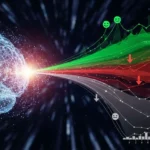Computer vision derives meaningful information from observable inputs and takes actions based on the inputs, the same as human vision. This article discusses Computer Vision with applications, history, categories, and market value.
What is Computer Vision?
Computer Vision is a field of Artificial Intelligence (AI) that deals with how computers can gain high-level understanding from images, videos, or other visual inputs. Computer vision is used for a wide range of applications, including – Detecting and classifying objects, Facial Identification, Image Segmentation and Categorization, Real-time Augmentation, and creating 3D maps or motion estimation.
Computer vision began at universities with artificial intelligence in the late 1960s [1]. It became believed with a summer project by a couple of undergrads in 1966, assigned by Marvin Minsky, achieved by attaching a camera to a computer and having it “describe what it saw.”
“When David Marr at MIT moved into computer vision, he generated a lot of excitement, but he hit up against the problem of knowledge representation; he had no good representations for knowledge in his vision systems.” — Marvin Minsky
What are the Catigories of Computer Vision?
Computer vision can be divided into three basic categories:
- Low-level vision, such as feature extraction from the image.
- Intermediate-level vision, such as object recognition.
- High-level vision; conceptual description of a scene, like activity and behavior.
Why is Computer Vision Important?
It allows computers to see so that they can make better decisions faster, more efficiently, and more reliably than humans can. Computer vision is a branch of artificial intelligence that interprets and translates data from visual media, including images, videos, X-ray scans, and other visual data.
Computer vision systems can use that data to make meaningful decisions by computational algorithms to detect facial features. Computer vision increasingly exists in different industries around the world.
The branch of AI is increasingly being used for applications such as facial recognition, theft detection, the retail industry, healthcare systems, autonomous vehicles, the manufacturing sector, quality assessment, and so on.
“I combine magic and science to create illusions. I work with new media and interactive technologies, things like artificial intelligence or computer vision, and integrate them in my magic.” — Marco Tempest
How are growing global Computer Vision markets?
According to Spherical Insights and Consulting, the global Computer vision market value was USD 11.7 billion in 2021. It is expected to reach USD 21.3 billion by 2030, registering a compound annual growth rate of 6.9% from 2022 to 2030 [2].
“Computer vision and machine learning have really started to take off, but for most people, the whole idea of what is a computer seeing when it’s looking at an image is relatively obscure.” — Mike Krieger





